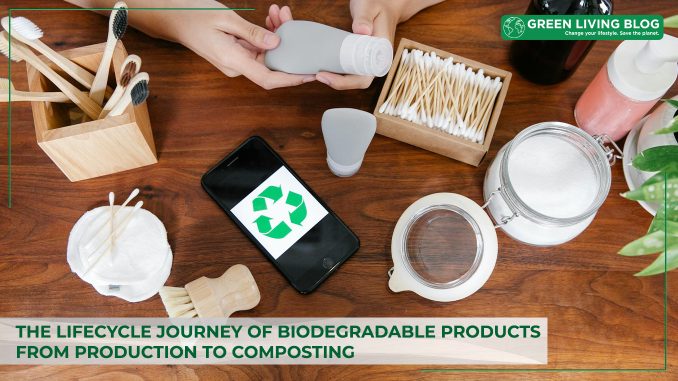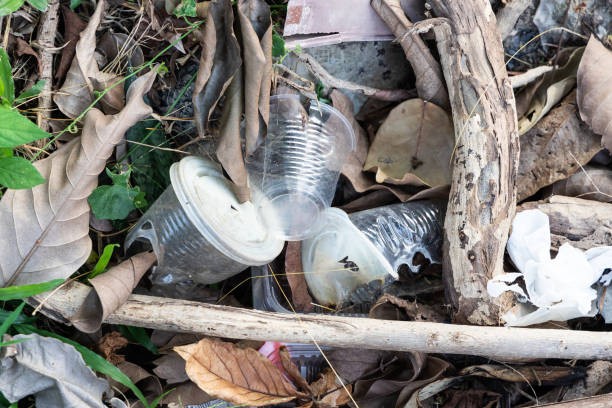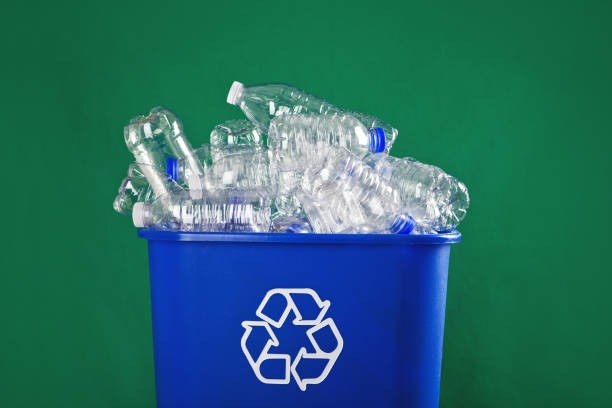
Biodegradable products are gaining attention as a solution to reduce plastic pollution.
Understanding the lifecycle of these products from production to composting can help individuals and businesses make eco-friendlier choices.
Let’s explore this lifecycle in detail.
Production: Eco-Conscious Choices Begin Here

Biodegradable products are usually made from renewable resources like cornstarch or sugarcane. Unlike traditional plastic goods, these materials come from nature, making them a better choice for the environment.
One of the most important areas in this is making a difference in compostable bags and products, which are at the forefront of this eco-friendly initiative and provide an excellent alternative to conventional plastic options.
Research and Development: Getting it Right from the Start
Before a biodegradable product is made, a lot of time and effort goes into research and development (R&D). This stage is all about planning and testing to make sure the product will do its job well and be eco-friendly. Scientists and engineers look for new materials and technologies to improve how biodegradable and useful these products are. The goal is to create products that are better for the environment right from the start, and R&D is where all this begins.
Usage: Functional and Environmentally Better
Biodegradable products perform well for consumers without the long-term environmental harm caused by conventional plastic. They serve their purpose and then break down much faster than traditional plastic, making them a practical eco-friendly choice.
Disposal: Responsible Disposal Matters
Disposing of biodegradable products is easier on the environment compared to plastic. While plastic waste ends up in landfills or oceans, biodegradable products can be composted, turning into useful material instead of lingering as pollution.
Composting: Completing the Circle
Composting is the final stage in the lifecycle of biodegradable products. Microorganisms break down these products into natural elements, returning valuable nutrients to the soil. The resulting compost can be used to improve soil quality in gardens and farms.
Consumer Education: Knowing How to Use and Dispose

The success of biodegradable products in reducing plastic waste depends a lot on consumer awareness. It’s important that people know how to use and dispose of these products the right way to get environmental benefits. For example, knowing the difference between compostable and biodegradable and how to dispose of each is key.
Companies and environmental groups have a role in sharing this information. They can use clear labels, online guides, and local events to help educate the public. When consumers know more, they can make better choices and help make biodegradable products a success for the environment.
Advancements and Challenges
Despite the benefits, there are challenges in the wider adoption of biodegradable products. For instance, not all biodegradable items break down easily in any setting, and some require specific composting facilities. The availability of composting facilities can also be a hurdle. However, ongoing advancements are helping overcome these challenges.
The Bigger Picture
Switching to biodegradable products is part of a larger movement towards environmental responsibility. It’s about creating a culture of sustainability where individuals, businesses, and communities actively reduce waste. For more insights on adopting eco-friendly practices, check out this guide on green living.
A Step Towards a Sustainable Future
The journey of biodegradable products from production to composting offers a glimpse into a more sustainable future. By choosing biodegradable products and supporting eco-friendly technologies, we move closer to a sustainable co-existence with nature. Investing in compostable plastics and the necessary infrastructure can reduce our reliance on traditional plastics and prevent long-lasting pollution.
Conclusion
The lifecycle journey of biodegradable products highlights a sustainable path forward. Through informed choices and collective efforts, a cleaner, greener planet is within reach. By understanding and participating in this lifecycle, we contribute to a better future not only for ourselves but for generations to come.
![]()
Author Profile
- Online Media & PR Strategist
- Blogger and Educator by Passion | Senior Online Media & PR Strategist at ClickDo Ltd. | Fascinated to Write Lifestyle Blogs in News & Education I have completed a journalism summer course at the London School of Journalism and manage various blogs.
Latest entries
 Green Expert GuidesMarch 28, 2025Lisbon Living: Where Sustainable Charm Meets Urban Energy
Green Expert GuidesMarch 28, 2025Lisbon Living: Where Sustainable Charm Meets Urban Energy EnvironmentJanuary 21, 2025Buying Eco-Friendly Homes: 6 Eco Questions to Ask Your Real Estate Agent
EnvironmentJanuary 21, 2025Buying Eco-Friendly Homes: 6 Eco Questions to Ask Your Real Estate Agent BusinessJanuary 16, 202510 Benefits of used Office Furniture when Refurbishing an Office
BusinessJanuary 16, 202510 Benefits of used Office Furniture when Refurbishing an Office Best practicesJanuary 6, 2025Eco-Friendly Event Planning: Mastering Sustainable Waste Management for Holiday Celebrations
Best practicesJanuary 6, 2025Eco-Friendly Event Planning: Mastering Sustainable Waste Management for Holiday Celebrations






Leave a Reply
You must be logged in to post a comment.